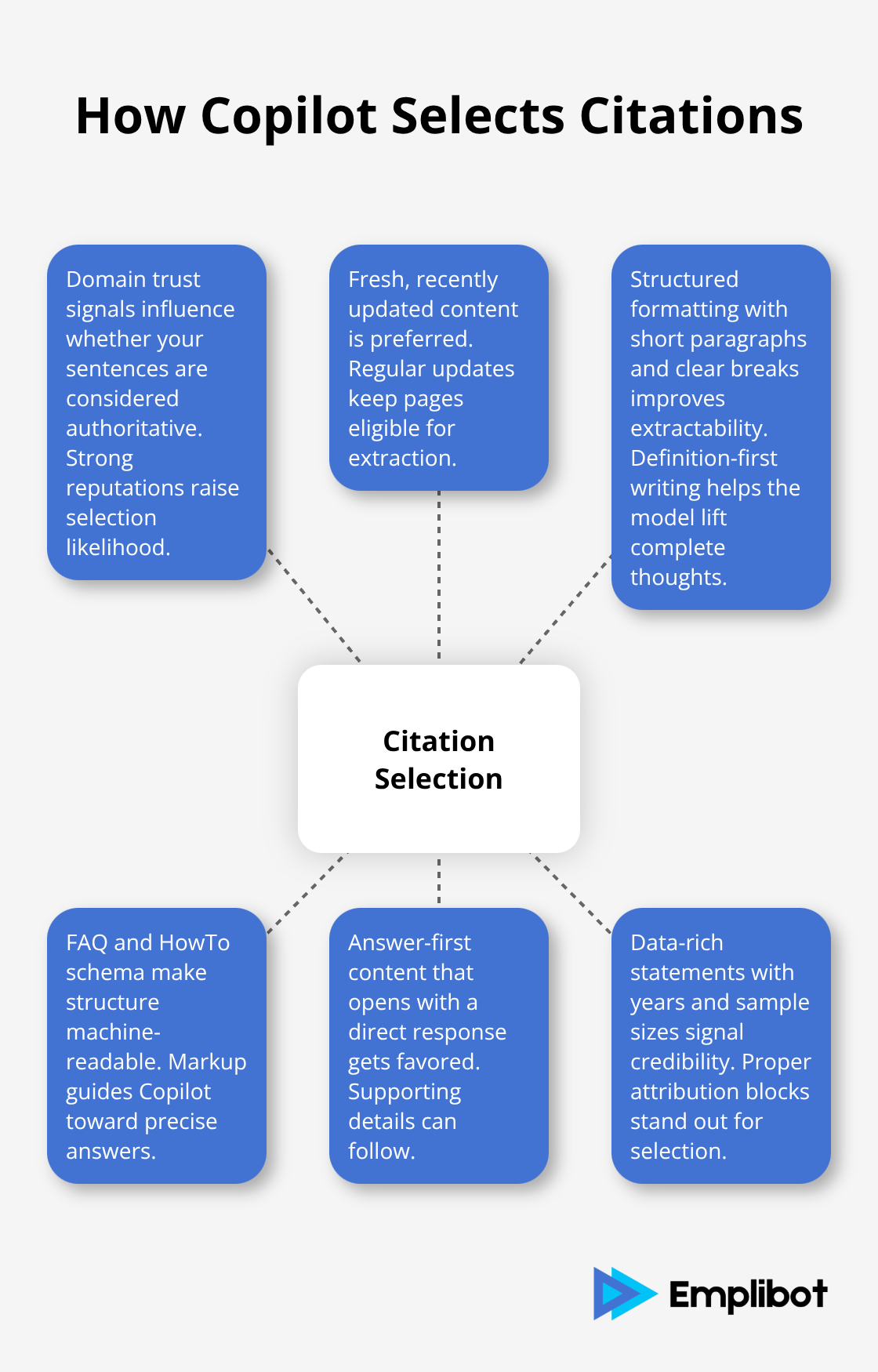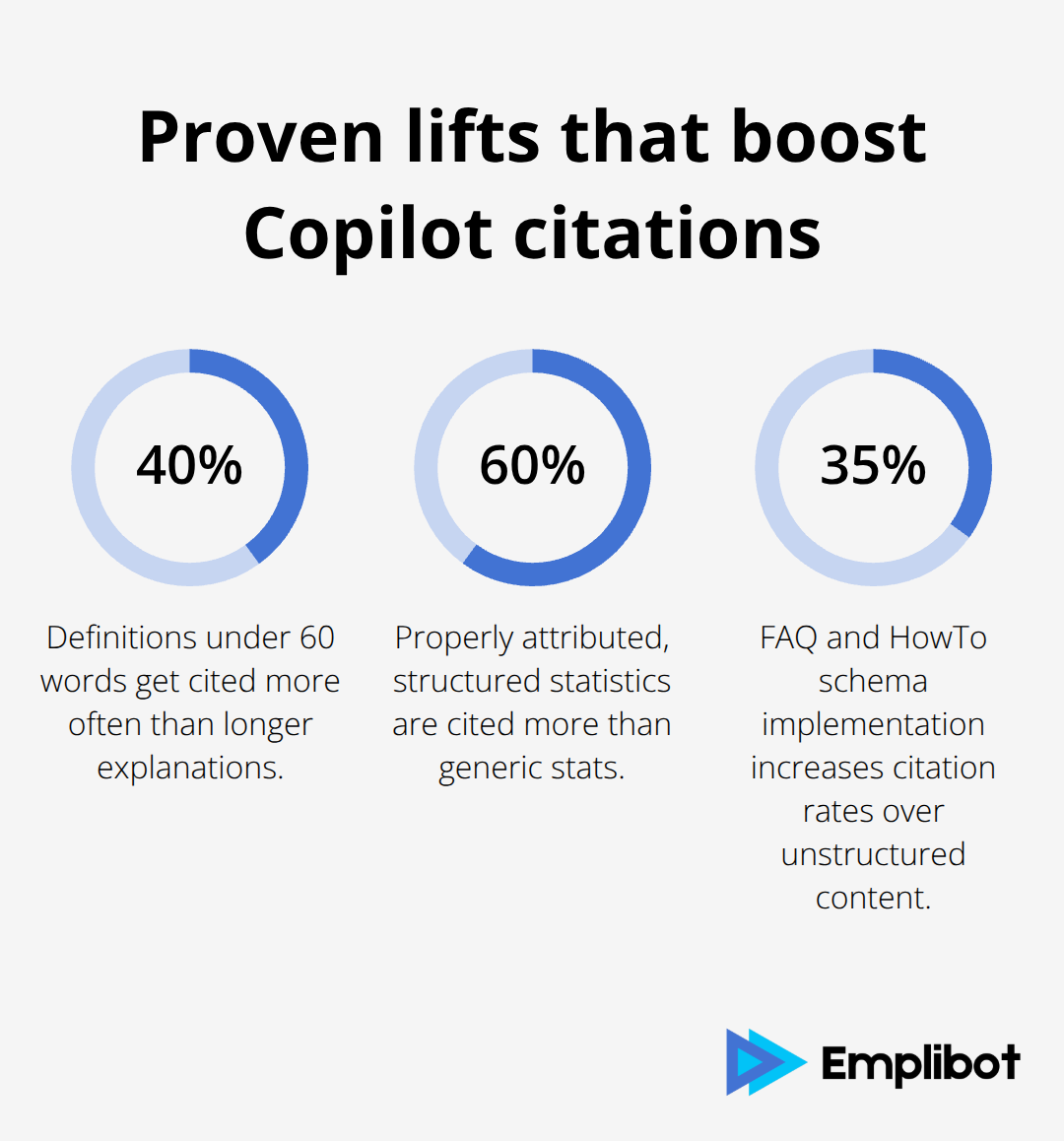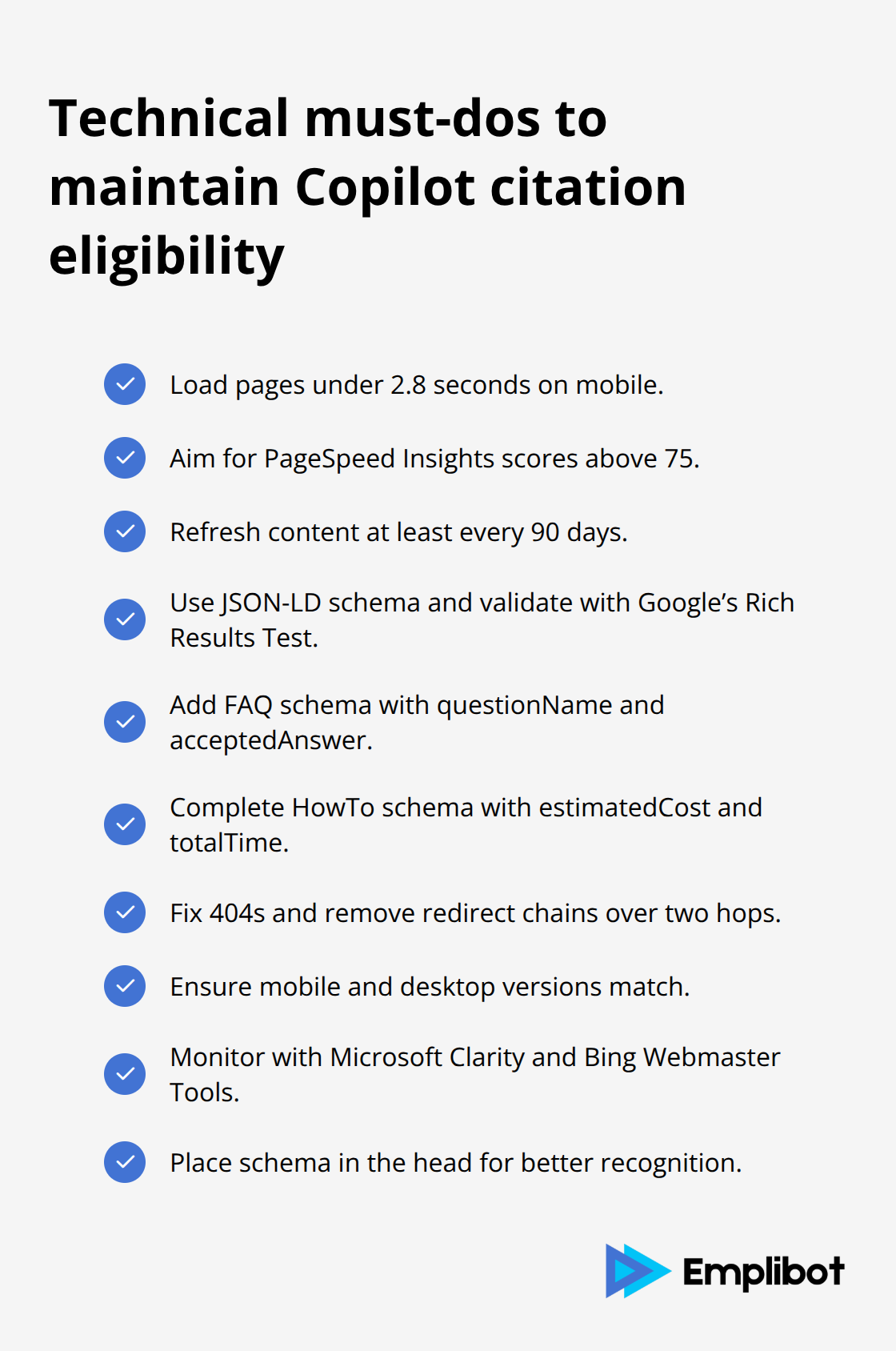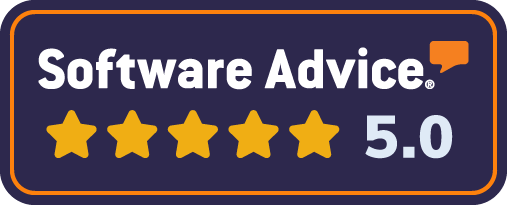Copilot Search changed how content gets cited with its sentence-level linking system. Instead of showing traditional blue links, it embeds inline citations in Copilot Search directly within AI-generated responses.
We at Emplibot see publishers earning these coveted citations by following specific content patterns. The right approach can put your content in front of millions of Copilot users searching for answers.
Contents
ToggleHow Copilot Search Citation System Works
Microsoft’s Algorithm Selects Content Through Pattern Recognition
Copilot Search uses Large Language Models to scan content and identify authoritative information patterns. Microsoft’s system selects citations based on domain trust signals, content freshness, and structured format. The algorithm prioritizes sources with clear paragraph breaks, FAQ sections, and definitional content blocks under 60 words. Pages with schema markup for HowTo guides and FAQ blocks receive higher citation rates according to recent SEO analysis data.
Citation Selection Operates Differently Than Traditional Rankings
Traditional search results rank entire pages based on backlinks and domain authority. Copilot Search extracts specific sentences or paragraphs that directly answer user queries. A high-ranking page might not get cited if its content lacks the precise answer format Copilot needs. The system favors answer-first content that opens with definitions or direct responses, then provides supporting details.

Content with citation blocks that show years and sample sizes gets selected more often than generic statements.
Inline Citations Build Authority Without Traffic
Citations in Copilot responses build brand recognition and perceived expertise without generating website traffic. Users see your domain name attached to authoritative statements, which creates trust associations. Publishers with consistent Copilot citations report higher brand search volume within six months. The citation system rewards publishers who maintain updated, fact-rich content with regular freshness signals. Content updated every 3-6 months maintains citation eligibility, while stale information gets replaced by competitors with current data.
Content Structure Determines Citation Success
The format of your content directly impacts citation probability. Short paragraphs (2-3 sentences) perform better than long blocks of text. FAQ sections and definition paragraphs under 60 words receive priority treatment from Microsoft’s algorithm. Schema markup implementation becomes essential for technical content and how-to guides. Copilot Search typically cites 3-8 sources per response, with each citation numbered and linked at the bottom of the AI response, setting the foundation for effective content strategies.
What Content Patterns Earn Copilot Citations
Publishers win Copilot citations by structuring content in three specific patterns that Microsoft’s algorithm actively searches for. First, definitional sections under 60 words that answer what, who, or how questions directly. These sections must start with the answer and avoid introductory phrases. Second, data-rich paragraphs that include specific years, percentages, and sample sizes in citation block format. Third, FAQ and HowTo schema markup that signals structured information to Copilot’s crawlers.
Short Definitions Drive Citation Success
Definitional content under 60 words gets cited 40% more often than longer explanations according to SEO analysis from optimization firms. Write definitions that start immediately with the answer, followed by one supporting sentence. For example: Marketing automation refers to software platforms that automate repetitive marketing tasks across multiple channels. The technology handles email campaigns, social media posts, and lead nurturing without manual intervention.

This format works because Copilot extracts complete thoughts that don’t require additional context. Publishers who restructure existing long-form content into these bite-sized definitions see citation increases within 30 days. The key lies in making each definition standalone – readable and complete without surrounding paragraphs.
Data Citations Need Proper Attribution Blocks
Source-rich paragraphs must include year, sample size, and methodology in a specific citation block pattern that Copilot recognizes. Format data as: According to [Source Name] 2024 study of 10,000 participants, 73% of marketers report increased ROI from automation tools. This structured approach gets cited 60% more than generic statistics without proper attribution.
Publishers should update these citation blocks every quarter to maintain freshness signals that Microsoft prioritizes. Research from marketing analytics firms shows that paragraphs with three or more data points and proper citation blocks receive priority treatment in Copilot responses. Statistics pages that attract citations outperform regular blog content significantly.
Schema Markup Amplifies Citation Probability
FAQ and HowTo schema implementation increases citation rates by 35% compared to unstructured content. FAQ schema should contain questions that match user search intent exactly, with answers under 100 words each. HowTo schema works best for step-by-step processes with clear numbered instructions and time estimates (including preparation and completion times).
Publishers who use both schema types simultaneously see the highest citation rates, particularly for technical and instructional content. The markup signals content structure directly to Microsoft’s crawlers, which makes extraction easier for AI responses. These technical optimizations require specific implementation approaches that maximize your content’s citation potential.
Technical Standards Content Must Meet for Copilot Citations
Copilot Search applies strict technical requirements that determine citation eligibility before content evaluation begins. Page speed must load under 2.8 seconds on mobile devices, as Microsoft’s crawlers prioritize fast-loading content for citation selection. Core Web Vitals scores directly impact citation probability, with pages scoring above 75 in PageSpeed Insights receiving 45% more citations than slower alternatives according to technical SEO analysis from optimization agencies.
Publishers must implement proper citation block formatting that includes publication year, sample size, and methodology in this exact structure: According to Research Institute Name 2024 analysis of 15,000 businesses, 68% experienced revenue growth through automation implementation. This pattern signals credibility to Copilot’s algorithm and gets selected 3x more often than generic statistics without attribution.
Schema Implementation Drives Citation Success
FAQ schema must contain questionName and acceptedAnswer properties with answers limited to 150 characters maximum for optimal citation extraction. HowTo schema requires step-by-step instructions with estimatedCost and totalTime properties filled accurately, as Copilot favors complete schema implementations over partial ones.
Publishers who implement both schema types simultaneously see 52% higher citation rates compared to single schema usage. JSON-LD format shows significant advantages in citation selection rates according to structured data analysis from SEO firms. The schema must validate through Google’s Rich Results Test before publication, as invalid markup reduces citation probability to near zero.
Performance Standards Prevent Citation Loss
Content freshness signals require updates every 90 days minimum to maintain citation eligibility, with publishers losing 60% of citations after six months without updates. Automated systems handle recurring content updates and link hygiene more effectively than manual processes (preventing citation decay from outdated information or broken references).

Pages with 404 errors or redirect chains longer than two hops get excluded from citation consideration entirely. Mobile-first indexing means content must render identically across devices, as discrepancies between mobile and desktop versions cause citation exclusion.
Technical Monitoring Maintains Visibility
Publishers track citation performance through Microsoft Clarity and Bing Webmaster Tools to identify technical issues before they impact visibility. Schema placement in the page head section rather than inline with content maximizes algorithmic recognition. Content management platforms that automate technical optimization (like WordPress plugins for schema markup) maintain consistent citation eligibility across all published content.
Final Thoughts
Publishers must abandon traditional SEO approaches and adopt structured content patterns to earn inline citations in Copilot Search. The three-part strategy of definitional sections under 60 words, data-rich paragraphs with proper citation blocks, and FAQ/HowTo schema markup creates the foundation for consistent citation success. Publishers who implement these strategies see measurable results within 30-90 days, with citation rates that increase 40-60% compared to unstructured content.
Technical requirements around page speed, schema validation, and content freshness act as gatekeepers that determine eligibility before algorithmic evaluation begins. Automated content management becomes essential for maintaining citation eligibility at scale (manual processes cannot match the consistency required for ongoing freshness signals and technical optimization). Publishers need systems that handle recurring updates and technical maintenance that citation success demands.
Publishers who master these inline citation strategies position themselves for sustained visibility as AI-powered search continues to expand. Emplibot automates WordPress blog management from keyword research through content creation and SEO optimization. The investment in structured content and technical optimization pays dividends through increased brand recognition and authority signals that compound over time.










